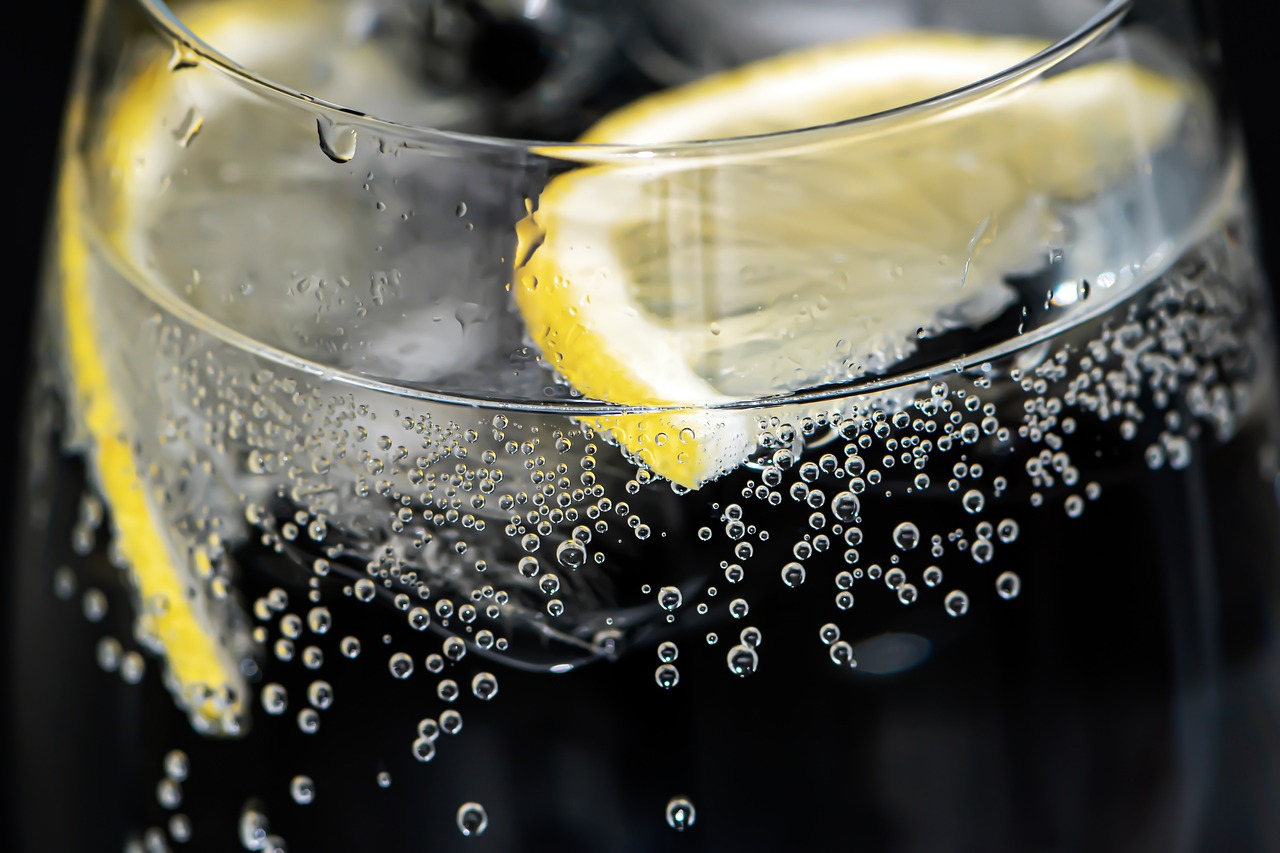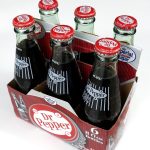As you navigate the bustling world of coffee shops and quick refreshments, understanding what you’re sipping on becomes paramount, especially when it involves caffeine. Dunkin’ Refreshers have surged in popularity, known for their vibrant colors and tantalizing flavors, offering a seemingly perfect pick-me-up for those on the go. But the question remains: do these refreshing beverages contain caffeine? This article dives deep into the heart of Dunkin’s menu to uncover the truth behind Dunkin’ Refreshers and their caffeine content. With a blend of expert insights and thorough analysis, we’ll explore not just the presence of caffeine in these drinks but also how they compare to other items on the Dunkin’ menu and the overall impact on your daily caffeine intake. Whether you’re looking to cut back on caffeine or simply curious about what’s in your cup, our guide will shed light on everything you need to know about Dunkin’ Refreshers. Join us as we unravel the caffeine content in these popular beverages, ensuring you make informed choices about your refreshment needs. Prepare to be surprised, informed, and perhaps even a little more caffeinated by the end of this enlightening journey.
An Introduction to Dunkin’ Refreshers
Dunkin‘ launched Refreshers in 2020 as a new lineup of fruit flavored beverages. Refreshers feature a fruit concentrate base combined with green tea, B vitamins, and other ingredients like strawberries or coconut milk depending on the variety.
Some of the most popular Refresher flavors include:
- Strawberry Dragonfruit
- Peach Passion Fruit
- Coconut Mango
- Strawberry Coconut
Refreshers provide a sweet, fruity taste that’s refreshing on a hot day. But the ingredient causing the most curiosity is the green tea – does it contain caffeine like a traditional iced tea drink?
Caffeine Content in Dunkin’ Refreshers
Dunkin’ Refreshers do contain caffeine. These fruity and lightly caffeinated beverages are made with green tea, which is a natural source of caffeine. A 16-ounce Dunkin’ Refresher typically contains about 66 mg of caffeine, which is a little over 4 mg per ounce. The caffeine content in Dunkin’ Refreshers is derived from brewed green tea and green tea extract, providing an energy boost similar to coffee but with lower caffeine levels compared to most coffee drinks.
The caffeine content in Dunkin’ Refreshers depends on the size ordered. Here’s a breakdown of how much caffeine is in each Refresher variety:
- Small (16 oz): 45mg
- Medium (24 oz): 60mg
- Large (30 oz): 75mg
So while a small or medium Refresher has less caffeine than a small or medium iced coffee (around 100mg), the large Refresher contains a similar amount of caffeine as a large iced coffee.
Compared to other Dunkin’ iced tea drinks, Refreshers have significantly less caffeine:
- Small Iced Green Tea: 42mg
- Small Iced Black Tea: 42mg
- Small Iced Matcha Latte: 75mg
So if you’re looking to limit caffeine, a small or medium Refresher is a better choice than Dunkin’s traditional iced tea beverages. But the large Refresher offers a bigger caffeine kick.
How Do Dunkin’ Refreshers Compare to Starbucks Refreshers?

Starbucks launched a similar lineup of colorful, fruity Refreshers around the same time as Dunkin’. Here’s how they compare in caffeine content:
- Small Starbucks Refresher (16 oz): 40mg
- Medium Starbucks Refresher (24 oz): 60mg
- Large Starbucks Refresher (30 oz): 80mg
The caffeine content is very similar between the two chains’ Refreshers at each size. Starbucks Refreshers offer flavors like Strawberry Lemonade, Mango Dragonfruit, and Peach Citrus White Tea.
Both chains designed their Refreshers to provide less caffeine than iced coffee and tea drinks. But if you size up to a large, you’ll still get a decent caffeine kick from either Dunkin’ or Starbucks Refreshers.
Nutritional Comparison to Other Beverages
Beyond just looking at caffeine content, how do Dunkin’ Refreshers compare nutritionally to other menu options? Let’s focus on calories, sugar, and caffeine.
| Beverage (16 oz small size) | Calories | Sugar (g) | Caffeine (mg) |
| Dunkin’ Refresher | 140 | 36 | 45 |
| Dunkin’ Iced Coffee | 15 | 3 | 97 |
| Dunkin’ Iced Tea | 5 | 33 | 42 |
| Starbucks Refresher | 130 | 33 | 40 |
| Starbucks Iced Coffee | 15 | 3 | 115 |
| Starbucks Iced Tea | 10 | 24 | 50 |
A few key takeaways:
- Dunkin’ and Starbucks Refreshers have very similar nutritional profiles, with the Starbucks version containing slightly fewer calories.
- Both Refreshers offer significantly more sugar than iced coffee, but less than iced tea. The high sugar content comes from the fruit concentrates and added sweeteners.
- Caffeine content is lowest in the Refreshers, followed by iced tea, and highest in iced coffee.
So if you’re concerned about calories or sugar, an iced coffee is the best nutritionally. But a Refresher offers lower caffeine with a flavorful, fruity taste.
Trying Dunkin’s Limited Edition and Seasonal Flavors
Dunkin’ has already begun rotating in new limited edition Refresher flavors beyond the core lineup. These seasonal offerings provide even more variety:
Apple Cranberry Refresher (Fall 2020): This autumnal flavor featured cranberry and apple concentrate along with cinnamon. The caffeine content was the same as the permanent small size Refresher at 45mg.
Winter White Cranberry Refresher (Winter 2020): Combining cranberry and citrus flavors, this had the same caffeine as other small Refreshers.
Strawberry Dragonfruit Sugarplum Refresher (Winter 2020): This unique flavor had elements of cranberry, dragonfruit and plum. Caffeine content again remained unchanged from the typical small size.
In the future, we can expect Dunkin’ to continue offering limited edition Refreshers to keep the lineup feeling fresh. But the caffeine amounts will likely stay consistent with their permanent Refresher offerings of 45mg, 60mg or 75mg depending on size.
Customizing Your Dunkin’ Refresher Order for Less Caffeine
While the standard Refreshers contain green tea and therefore a moderate amount of caffeine, there are a few ways to customize your order to reduce the caffeine content:
- Ask for no green tea: Ordering a Refresher made only with the fruit concentrate and no green tea will eliminate the majority of the caffeine. This will give you the sweet fruity flavor without as much of a caffeinated kick.
- Substitute lemonade or coconut milk: Choosing lemonade or coconut milk instead of the green tea base will also remove most of the caffeine. The lemonade and coconut milk varieties have only trace amounts of caffeine.
- Order a smaller size: Sticking with the standard small 16oz Refresher instead of sizing up to a medium or large will reduce caffeine due to the smaller overall volume.
- Request light ice: Asking for light ice means more of the fruity Refresher base and less diluted caffeine. But it still won’t decrease the overall caffeine content compared to a normally iced Refresher.
- Try a custom combo: Mix and match flavors like strawberry and lemonade or mango and coconut milk to create your own lower caffeine Refresher creation.
The Health Benefits of Ingredients in Dunkin’ Refreshers
While the sugar content is admittedly high in Refreshers, some ingredients like green tea and B vitamins do provide some health benefits:
- Green tea contains antioxidants like epigallocatechin gallate (EGCG) which may help prevent cell damage and lower risk of chronic diseases.
- B vitamins like vitamin B12, B6 and B3 (niacin) help convert food into energy and support skin, hair, and liver health.
- Fruit concentrates like strawberry and citrus provide a serving of fruit, including vitamin C and antioxidants with health-promoting properties.
Overall though, Refreshers shouldn’t be viewed as a healthy low-calorie beverage choice. But they do contain some redeeming ingredients like green tea that boost the nutritional value.
Healthier Drink Options at Dunkin’ Donuts
If you love the Dunkin’ menu but want to make a healthier beverage choice, here are some tips:
- Opt for unsweetened iced coffee or tea to avoid added sugar. Requesting them without any sweeteners will remove all calories and carbs.
- Add skim or low-fat milk to coffee and tea instead of heavy cream. This removes significant calories and fat without sacrificing flavor.
- Try cold brew coffee for a smoother taste with less acidity compared to traditional iced coffee. Choose unsweetened to prevent calories.
- Customize your own fruit infused tea with lemons, oranges, strawberries or other fresh fruit. This allows you to control ingredients and sweetness.
- Order a coffee or espresso over ice and top it off with stevia or another zero-calorie sweetener if you want added sweetness without extra sugar.
Making some simple tweaks allows you to enjoy Dunkin’s great taste while maintaining healthy nutrition goals.
Recreate the Dunkin’ Refresher Flavors at Home
The Dunkin’ Refreshers offer a unique fruity taste that’s easy to recreate at home. Making your own allows you to customize the sweetness level and ingredients. Here are some easy DIY recipes:
Strawberry Dragonfruit Refresher: Blend together frozen strawberries, dragonfruit, lime juice, stevia or other sweetener of choice and water or coconut water. Pour over ice and top with mint.
Peach Passionfruit Refresher: Mix peach juice, passionfruit puree or mango juice, Greek yogurt, honey or maple syrup, and water in a blender. Pour over ice and garnish with orange slice.
Coconut Mango Refresher: Blend fresh mango, coconut milk or coconut water, lime juice, agave nectar, and ice. Top with toasted coconut flakes.
The combinations are endless depending on your favorite fruit flavors. Adjust sweeteners to taste preference. Adding fresh mint or fruit slices provides extra garnish.
Dunkin’s Sustainability Efforts for Beverage Packaging
In addition to innovating new beverage options, Dunkin’ has taken steps to promote sustainability with their serving materials:
- Eliminated foam cups in global stores in 2018 and replaced them with double-walled paper cups, eliminating polystyrene foam waste.
- Introduced wooden stir sticks as an alternative to plastic stirrers in their cold beverages, which are compostable.
- Use recyclable iced coffee cups made with #5 polypropylene that can be recycled in many public facilities.
- Added double-walled paper cups for hot drinks to keep hands cool without needing sleeves that produce excess waste.
Though Refreshers use plastic cups and dome lids, Dunkin’ claims they actively research ways to make their packaging more sustainable. As consumer demand grows, look for even more green initiatives.
Perks of Being a Dunkin’ Rewards Member
Signing up for the free Dunkin’ Rewards program allows you to earn points towards free drinks for purchases. Here are some of the perks for ordering Refreshers:
- Earn points for every Refresher purchase to redeem for rewards like free beverages.
- Take advantage of occasional bonus point offers for all Refreshers to get rewards faster.
- New members get free drinks upon signing up, which you can redeem for any Refresher variety.
- Order ahead on the app and skip the line in-store, making getting your Refresher quicker and easier.
- Receive notifications about new Refresher launches and special offers tied to Refreshers.
Dunkin’ Rewards makes it easier to treat yourself to new Refreshers all season long.
Conclusion
Dunkin’ Refreshers offer a deliciously sweet and fruity beverage with a moderate caffeine content. The amount of caffeine ranges from 45mg in a small size to 75mg in a large, which provides an energizing lift but less caffeine than a typical Dunkin’ coffee or tea. While high in sugar, Refreshers do contain some healthy properties from ingredients like green tea, fruit juices and B vitamins. Customizing your order, choosing healthier menu options, and taking advantage of loyalty perks allows you to enjoy Dunkin’ Refreshers guilt-free all summer long!
Susan Muskat is a professional chef with over 25 years of experience in the culinary industry. After working in some of the most prestigious restaurants in the world, she opened her own restaurant, Moose and Sadie’s, which quickly became a local favorite. Susan is also the author of a blog all about recipes, guidelines, cooking tips, and knowledge from professional chefs. She loves nothing more than sharing her passion for food with others.








